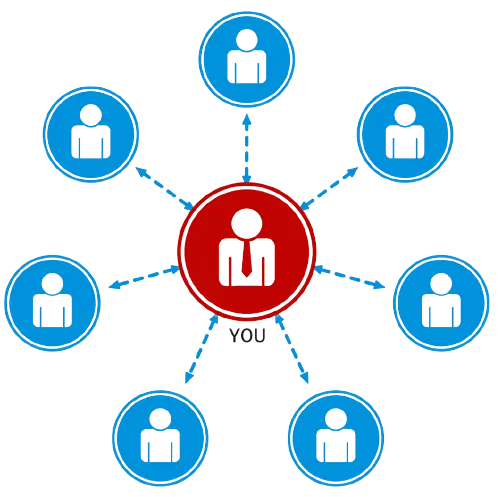MANAGEMENT • 4 MIN READ
How to Overcome a Bottleneck in Business: Strategies for Success

In any business, there are times when progress seems to come to a halt. Despite the best efforts of business owners and employees, the organization is unable to move forward, grow, or achieve its goals. This is what is known as bottlenecks in business – a situation where a process or task becomes the limiting factor for overall performance.
Bottlenecks can arise in various aspects of a business, from production to sales to customer service, and can have a significant impact on the bottom line. Overcoming a bottleneck in business requires a clear understanding of the causes, effective strategies, and a willingness to make changes.
In this article, we will explore what a bottleneck in business is, why it’s important not to overlook them, and steps to take care of business bottlenecks for yourself and employees. In addition, we will examine some challenges that can arise when solving them.
What is a Bottleneck in Business?
- Insufficient resources: Work gets delayed or stuck when there aren’t enough resources, such as labor, materials, equipment, or time. This reduces productivity and efficiency and may result in poor output.
- Poor communication: Without clear instructions, expectations, or feedback, team members may struggle to complete their tasks effectively.
- Outdated technology: Technology that lacks speed, capacity, and functionality hinders productivity.
- Complex procedures: When a process is too complex, it can be challenging for team members to understand and follow, leading to confusion and mistakes that slow down the workflow.
- Human errors: When team members make mistakes, they may need to stop and correct the error, causing a backlog of work at the bottleneck.
Is a Business Bottleneck Something to Worry About?
Ignoring or underestimating a bottleneck in business can have serious consequences for the overall performance, acceleration, profitability, and sustainability of a company. A bottleneck can cause delays, backlogs, quality issues, customer dissatisfaction, employee frustration, and missed opportunities. Moreover, a bottleneck can create a ripple effect that affects other areas of the business and triggers new bottlenecks.
Steps to Deal With Business Bottleneck Issues

#1. Map Out Your Business Processes
To identify a potential bottleneck in business, you need to have a clear understanding of how your business processes work and how they interact with each other. Use flowcharts, diagrams, or software tools to map out your workflows, inputs, outputs, and dependencies.
For instance, you could create a flowchart to identify how data flows from the customer to the shipping team, and how it is then sent back to the customer. By doing so, everyone involved would know what customer service expectations are. Additionally, it could identify areas that could be improved, so customer expectations can be met efficiently and quickly.
#2. Analyze Your Data
Once you have mapped out your business processes, collect and analyze data on key performance indicators (KPIs) that measure the efficiency, productivity, and quality of each process. Look for patterns, trends, and anomalies that indicate bottlenecks, such as long cycle times, high defect rates, low throughput, or idle resources.
By identifying patterns and trends in the data, you can identify areas where processes need to be improved or where resources can be better utilized. This will allow you to make informed decisions about how to improve your business processes and maximize efficiency.
#3. Prioritize Your Bottlenecks
Not all bottlenecks are equally urgent or impactful. Use a Pareto chart or other prioritization technique to identify the most critical bottlenecks that have the highest impact on your business goals and the lowest cost and effort to fix. Focus on those bottlenecks first and tackle them systematically.
Some businesses may struggle to allocate the necessary resources or budget to address bottlenecks, especially if they are facing other financial or operational challenges. To overcome this challenge, prioritize the bottlenecks that have the highest impact and the lowest cost to fix, look for creative solutions that leverage existing resources or partnerships, or consider seeking external funding or support.
#4. Optimize Your Resources
Bottlenecks often occur due to resource constraints, such as limited capacity, skills, or equipment. To overcome these bottlenecks, you may need to optimize your resources by reallocating them, outsourcing, automating, or investing in new ones.
For example, you can cross-train your employees to perform multiple tasks, outsource some non-core functions to a third-party provider, or invest in new software or machinery that can speed up your processes.
#5. Improve Your Communication
Bottlenecks can also arise due to poor communication or coordination among different teams, departments, or stakeholders. To prevent or resolve these bottlenecks, you need to improve your communication channels, protocols, and feedback loops.
Encourage open and transparent communication among your employees, set clear expectations and deadlines, provide regular feedback and coaching, and foster a culture of continuous improvement.
Taking these steps into consideration will set your business on the path to scaling big!
Bottleneck Business Challenges and Ways to Solve Them
Resistance to Change
Employees may resist changes to their established ways of working or may lack the motivation or skills to adapt to new processes or tools. To overcome this challenge, involve your employees in the process of identifying and solving bottleneck business issues, provide training and support, and recognize and reward their contributions.
Complexity or Interdependence of Processes
Lack of Resources
Another challenge that businesses face when trying to overcome bottlenecks is a lack of resources. This can include financial resources, such as funds to invest in new technologies, or human resources, such as skilled employees to implement new processes.
To overcome this challenge, it may be necessary to prioritize bottlenecks that have the greatest impact on the business and focus resources on addressing those first. It may also be helpful to explore alternative solutions, such as outsourcing or partnering with other organizations.
Fix Your Bottleneck in Business with 2X Speed

Business bottlenecks are one of the key challenges that business owners and leaders face on a daily basis. However, with the right support and resources, business owners and leaders can fix their bottlenecks and achieve greater results with less effort.
2X is a business coaching and mentorship team that specializes in helping business owners and leaders optimize their performance, growth, and impact. One of the key areas that 2X focuses on is effective management and creating self-sustaining practices inside the company.
One of the resources that 2X offers to help business owners and leaders with dealing with bottlenecks is their book From 6 to 7 Figures. This book is a comprehensive guide on how to scale a business from six to seven figures and beyond, and it provides practical tips and insights on various aspects of business management, including bottlenecks in business.
By following the tips and strategies outlined in the book, business owners can achieve significant time savings and growth potential results for their businesses.
Conclusion
In conclusion, bottleneck business problems can be a significant obstacle to achieving business success, but they can also be overcome with the right mindset, skills, and strategies. By proactively identifying, addressing, and preventing bottlenecks, business owners, leaders, and managers can improve the efficiency, productivity, quality, and customer satisfaction of their businesses.
However, this requires a continuous process of learning, experimentation, and adaptation, as well as a willingness to embrace change and challenge the status quo.
One valuable resource that can help business owners and leaders overcome bottlenecks is 2X, which has a growing community of successful entrepreneurs, CEOs, and industry experts. By leveraging the expertise and resources of 2X, business owners and leaders can gain the knowledge and support they need to overcome bottlenecks and unlock their full potential.

The Playbook To 7+ Figures
This has been called “the business Bible for 6-figure entrepreneurs”… now you can get it with exclusive bonuses for a crazy low price!
Related Articles